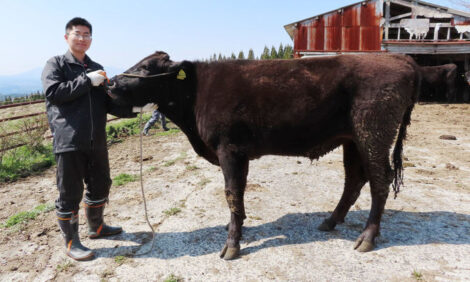



CME Group Hosts Analysts Outlook of USDA Reports
ANALYSIS – Three grain analysts shared corn, soybean and wheat industry expectations ahead of the group of USDA reports to be released on Friday, reports Sarah Mikesell, TheCattleSite senior editor.
Dr. Bill Tierney, grain analyst with AgResource Company, said industry analyst estimates for corn production are all about the same – around 14.053 billion, which is up 64 million bushels over USDA’s last production estimate. Trade expectations are for December corn stocks to be at up 2.747 billion bushels. Tierney said Ag Resource is on the high end of the industry range and believes stocks will be 240 million bushels above industry expectations.
For the final corn stocks report in the World Ag Supply and Demand Estimate report, Tierney expects corn stocks to be slightly higher than USDA’s Dec estimate. AgResource put their estimate about 131 million bushels higher than trade estimates. Tierney expects a bearish market response to the report figures.
“Lastly the South American crop production estimates … no real fireworks are expected there unless USDA lowers their Argentine corn estimate,” Tierney said. “Their last one was 26 million metric tons, some trade estimates are as low as 23 million metric tons. USDA’s last report on Brazil corn was for 70 million metric tons and there are trade estimates as high has 75 million metric tons, so there is the possibility that we could see smaller Argentine corn and possibly larger Brazilian corn.”
Soybeans

Greg Wagner, grain analyst with GWX Ag Advisors, said in the Crop Production report trade expectations are for slight uptick in total soybean production by about 20 million bushels, largely driven by increased yields and increased production.
In the Dec Grain Stocks report, Wagner said trade expectations are 2.161 billion bushels. Of note, stocks for soybeans as of December 1st are be expected to be 200 million bushels higher than year-ago figures.
“USDA carryout is at 150 million bushels of soybeans, and trade expectations are just a smidge below that at 1 million bushels below, based on strong export demand,” Wagner said.
Trade expectations have put South American soybean production substantially higher in Argentina and Brazil given the favorable growing conditions.
Wheat

Terry Roggensack, analyst at The Hightower Report, said for US ending wheat stocks, traders are looking for about 557 million bushels compared to 575 million bushels in the December report which is a 5-year low in ending stocks. December 1st wheat stocks are expected to be about 1.4 billion bushels, which is 271 million bushels below year ago.
“So we are going into the last part of the wheat season with relatively tight stocks compared to last year,” Roggensack said. “The issue has been that wheat feeding has not been very sufficient. If September wheat feeding before corn was really moving out on the market – was still relatively high, you could end up with a number closer to 1.35 billion bushels. That would be a little bit friendly.”
World stock numbers are not expected to change much 182.6 million tons, just down slightly from last month’s estimates.
“Six years ago we were at 130 million tons, so world wheat stocks are still sitting at a relatively high level,” Roggensack said.
The first look at 2014 crops has traders looking for 43.5 million acres that would be up 421,000 acres over a year-ago or a 1 per cent increase over year-ago. The industry range is 42.5 to 44.6 million acres.
“Hard red is at 30.45 million acres is up 879,000 acres and soft red is down 494,000 acres,” he said. “There is a little risk that during the fall planting season that the central and northern part of the Winter Wheat Belt were a little dry which could make for a slightly bullish report from an acreage standpoint.”
Winter Wheat and the Weather?
 Bill Tierney said he totally dismisses any talk that the winter wheat crop is in trouble due to the recent Artic-like weather conditions.
Bill Tierney said he totally dismisses any talk that the winter wheat crop is in trouble due to the recent Artic-like weather conditions.
“The best approach is to simply take Friday’s winter wheat acreage and take 13 to 15 per cent off for abandonment and then use a trend yield,” he said. “Until we see this crop in early May, I don’t think we can determine yields.”
Roggensack agreed, noting that the big users of wheat – the US, Europe, the Black Sea and China – all have excellent wheat crops going in that are better than average right now.
“Extreme weather is a factor that down the road people might be looking at going into the summer, but the cold weather doesn’t have any impact on the crop,” he said. “The main feedlot regions are far enough west that it really didn’t impact the areas. It got a little cold in Kansas, but nothing like the Midwest and East Coast.”



